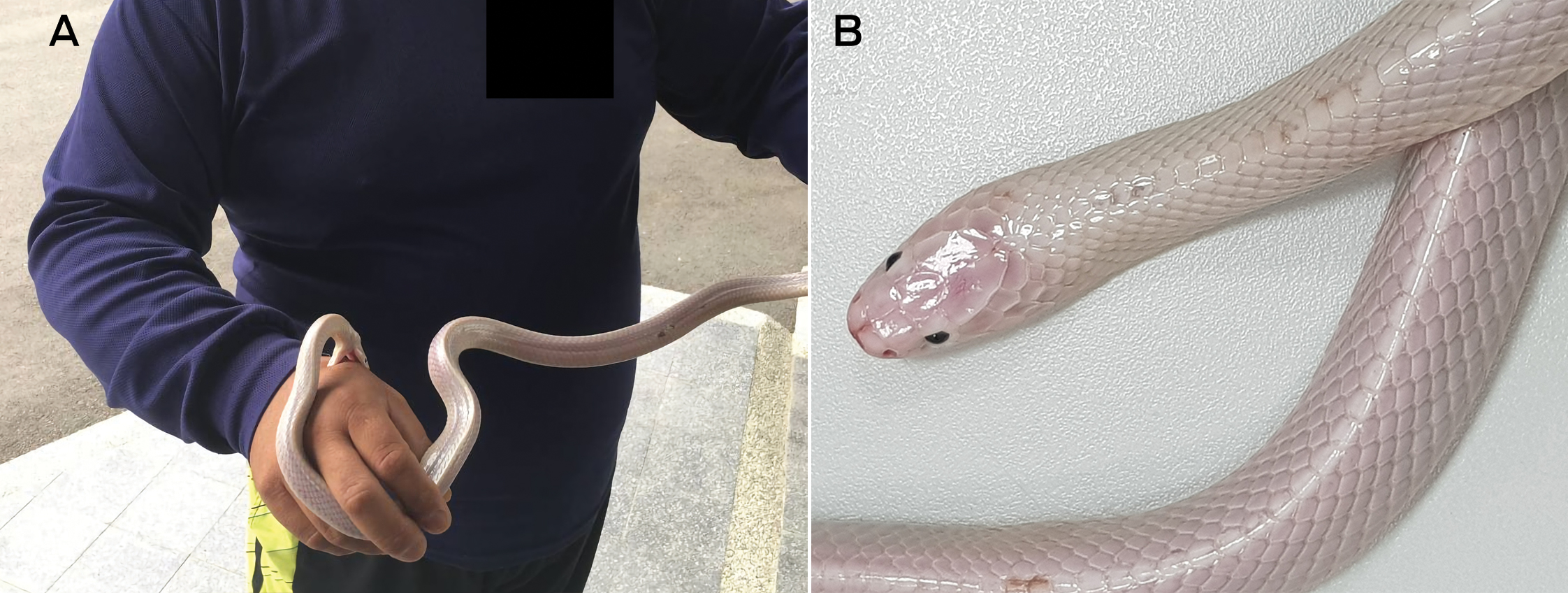A 52‐year‐old fireman presented to the hospital after being bitten by a white snake when demonstrating a snake handling technique to his colleagues (Figure, A). He developed respiratory paralysis 1.5 hours after the bite. The snake was identified by a herpetologist as a leucistic Bungarus multicinctus multicinctus through its characteristic scale patterns: enlarged hexagonal vertebral scale (Figure, B), triangular transverse plane, and single subcaudals.1 This elapid snake causes less than 10% of all snakebites in Taiwan, and its venom comprises mainly α‐ and β‐bungarotoxins.2 Twelve vials of bivalent antivenom against B. m. multicinctus and Naja atra were administered, and he was effectively weaned from the ventilator 9 days after the bite.2 Unfortunately, polyneuropathy manifested as painful numbness and hyperaesthesia on the limbs, and decreased sensation on the trunk occurred 2 weeks later. He could return to work 4 months after the snakebite following rehabilitation. In Taiwan, firefighters are the first line staff for removing snakes from people's houses. Lack of adequate training in snake handling can be a human safety concern.
The full article is accessible to AMA members and paid subscribers. Login to read more or purchase a subscription now.
Please note: institutional and Research4Life access to the MJA is now provided through Wiley Online Library.





No relevant disclosures.